When I was a smoker, I was constantly torn between my desire to stop smoking and my desire to smoke. I loved and hated smoking, often within the same breath.
One moment, I’d be justifying to my family how much I enjoyed it; then, ten minutes later, I’d be silently berating myself because of how much I had smoked. Deep down, I wanted nothing more than to be free, but achieving this seemed easier said than done.
Quitting smoking was like navigating through a wild, hostile forest without a map, trail, or protective equipment. Even with two academic degrees in psychology, I always felt lost, demotivated, and hopeless.
I tried every quit-smoking approach, and I mean every single one, yet failed more times than I can count. I went cold turkey using willpower, I tried the nicotine patch, switched to vaping, got hypnotized, even became a certified hypnotherapy practitioner, and took medication.
Whenever I tried to lay my “friend” down, I experienced cravings and withdrawals so intense that I felt physically ill. I was a lost cause.
There was this one time, I was two days smoke-free, and a craving hit while I was stuck in traffic. I tried distracting myself, but the urge wouldn’t go away, and I started feeling dizzy. Long story short, I ended up bumming a Marlboro from a lady in the neighboring car. Without an exception, all my attempts ended in despair and a cigarette between my fingers.
My life had turned into a daily tug-of-war between my logic and my emotions. Logic shouted, “I need to stop. Why can’t I do it?” emotions countered, “What if I fail again? What if I miss it?” And you’ve probably been there.
This inner conflict never seems to stop. It feels like you’re actively self-sabotaging and standing in your own way. The more you try to quit, the more you smoke.
This is the struggle every smoker goes through. It’s the conflict between the “real you” and the “addicted you.” Yet despite that — often paralyzing — inner conflict, you went online and looked for ways to stop smoking which got you here. This might seem like a small step, but it’s a big win against the “addicted you.”
You made it here for a reason, and you’re in the right place.
Because if you’re looking for an effective way to quit smoking without missing cigarettes but feel you’ve heard it all before and don’t know where to start, this page will show you a new way.
And if you’ve tried to quit before with willpower or medication, only to relapse because of cravings, stress, or weight gain, you are not alone.
Millions of people try and fail to quit smoking every year because their addicted self wins. Angela was one of them.
A self-professed cigarette lover of thirty seven years, Angela had multiple failed attempts under her belt, from cold turkey to nicotine patches and everything in between. She joined our online support community, declaring this was her last hope in a life-or-death struggle with chronic obstructive pulmonary disease (COPD).
Nobody could have imagined how someone as smart, successful, and confident as her struggled so much with this addiction. Angela had achieved every goal she’d set for herself, except quitting smoking.
Angela’s COPD had dramatically decreased the quality of her life. It made it hard to breathe, ruined her stamina, gave her an unstoppable cough, and her health anxiety kept her up at night.
Cigarettes were ruining her life, and still she could not put them down.
Like everyone who’s ever tried to quit, Angela knew all the reasons why she shouldn’t be smoking but felt she needed cigarettes to cope with stress and boredom. Logically, she wanted nothing more than to quit smoking. Emotionally, she found it impossible.
But despite these struggles, I was able to help Angela finally kick the habit. Over the years, I’ve personally helped thousands of other smokers and vapers like her (you can see them proudly displaying their Success Certificates below). Now I want to show you how you can quit smoking, even if you love cigarettes.
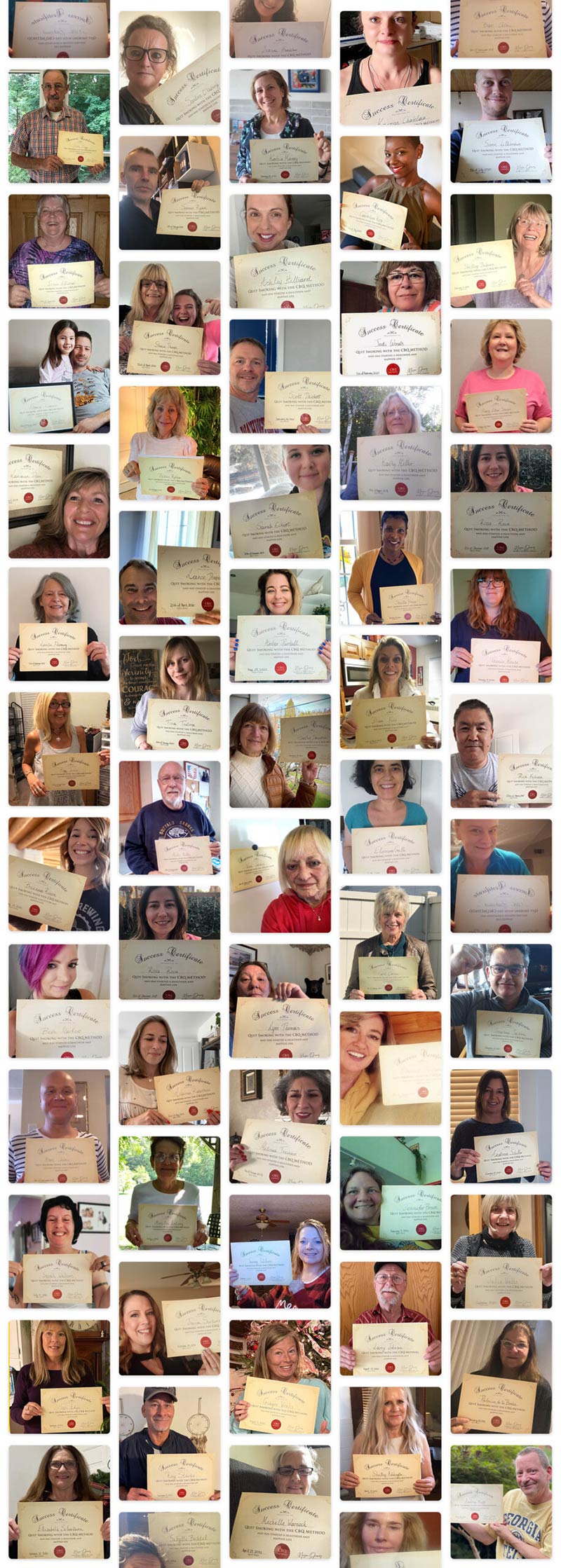
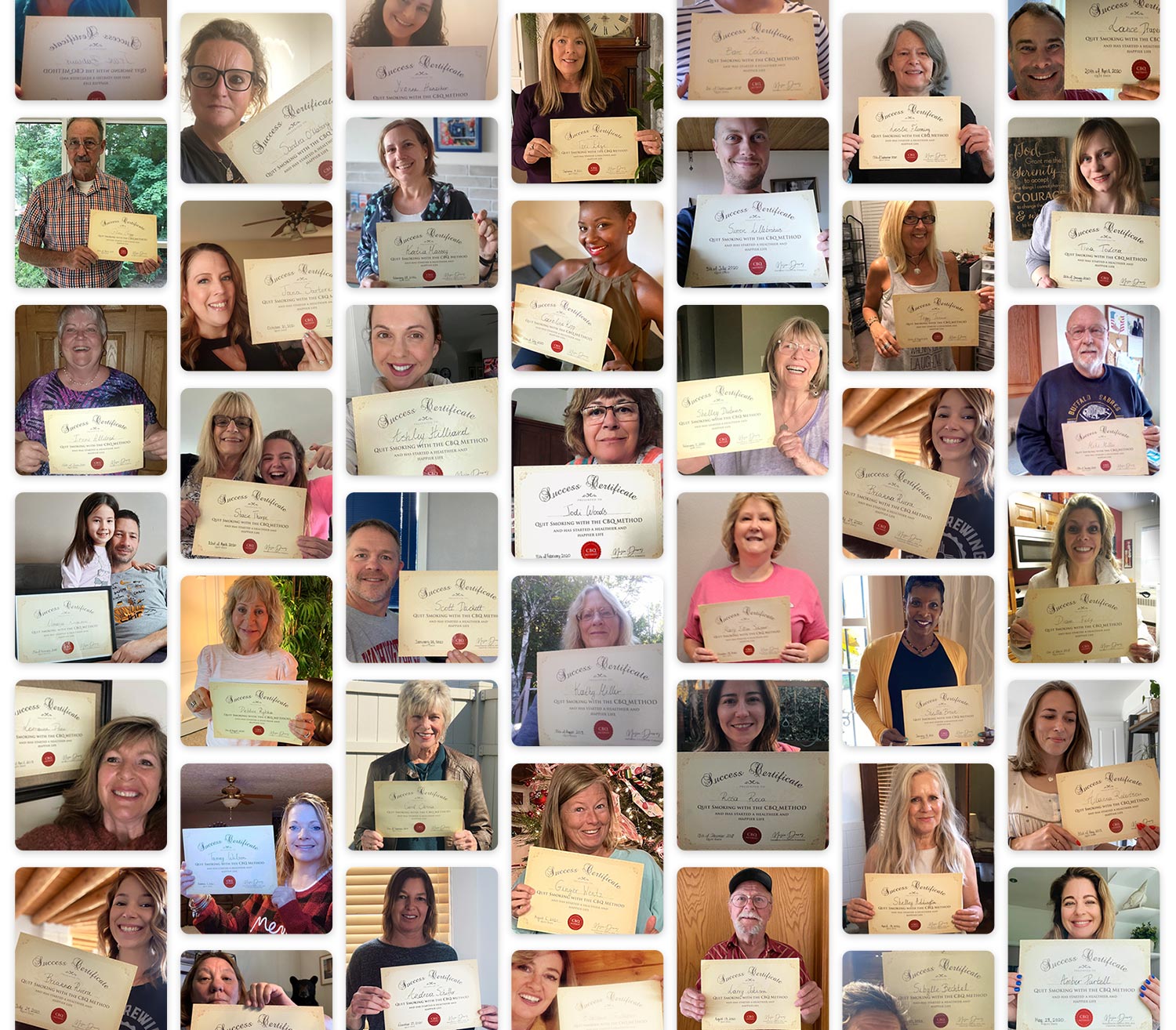
My name is Nasia Davos. I’m a psychologist, author, certified life coach, and certified smoking cessation coach. Above all, I used to be a smoker, too. Over the last decade, my team and I have developed a psychology-based quit smoking method that has been featured on:
- TED talks,
- Huffington Post,
- Harvard Blog,
- Healthable,
- Reuters, and
- NBC News.
This method has also been selected as the best natural method to stop smoking by VeryWell Mind and has won the Wellbeing Program Specialist of the Year Award for the last two years in a row.
More important than all of this recognition put together are the countless success stories of the people we’ve helped break free from smoking!
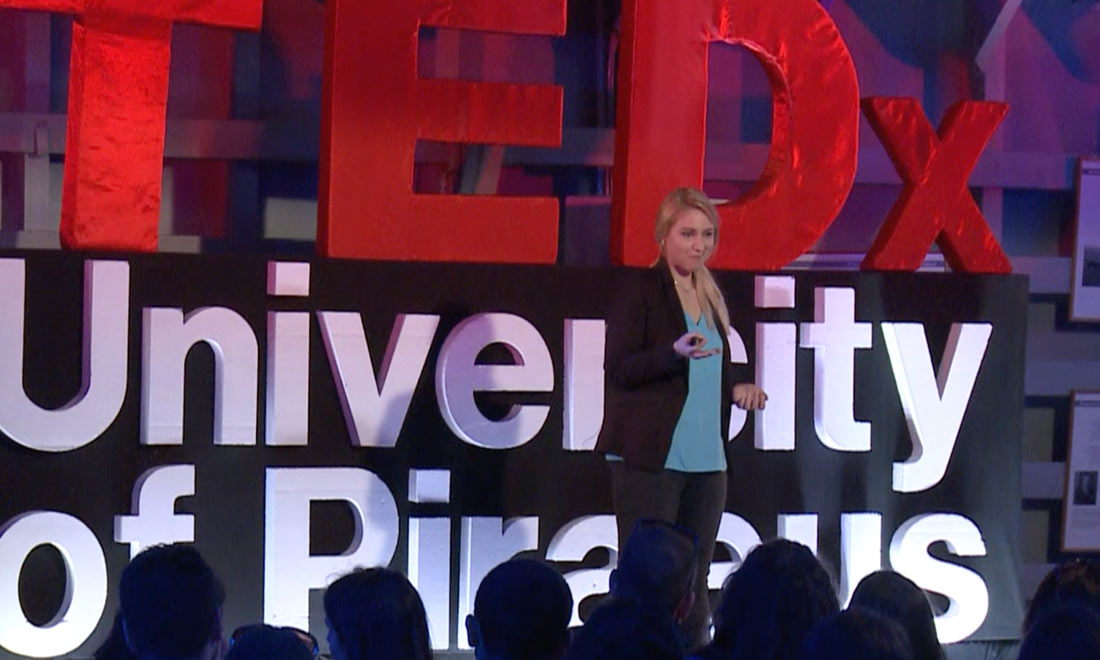
But I didn’t always know the secret to becoming a happy non-smoker. It was only after spending months researching and interviewing smokers and happy ex-smokers (I’ll tell you that story another time), that I realized most people – including me – were trying to quit the wrong way!
The Wrong Way to Quit Smoking
Most people believe that quitting smoking is about conquering the physical addiction to nicotine, but the truth is that nicotine is weak.
It’s a substance with a short half-life, which means that 50% of the nicotine in your body is gone 2 hours after you have a cigarette. The other 50% has left your body 3-5 days after you stop smoking.
That means it only takes 5 days to beat the physical addiction!

If the real problem were the physical cravings for nicotine, you would not be able to sleep. Think about it: you might not go more than 2 or 3 hours without a cigarette during the day, but you can sleep through the night without being woken up by your physical cravings.
Since nicotine doesn’t have a strong physical hold over you and leaves your body quickly, you can see why you have struggled to quit smoking using nicotine substitutes or medication.

Using patches and gums that feed your body lower doses of nicotine does not help you become nicotine free. It only prolongs your nicotine withdrawal.
Also, taking pills that are supposed to lower your cravings cannot stop you from lighting up when you feel down or anxious. It only delays you solving the real problem.
The Real Problem
If quitting is not all about the nicotine, what is it about? The addiction to smoking is only 20% physical. The other 80% is all mental.
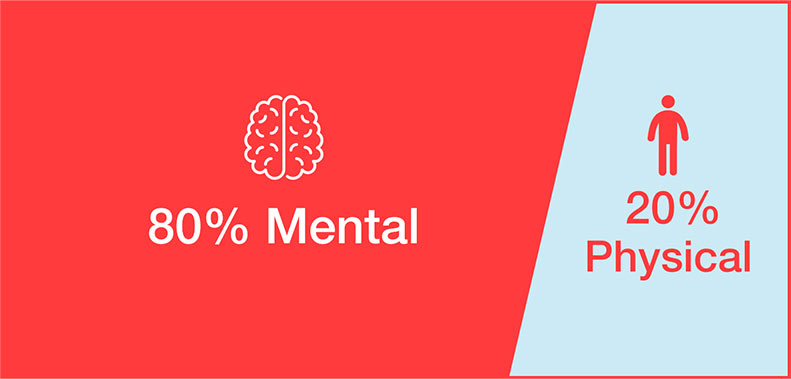
The mental addiction is your desire or need for cigarettes, how much you believe you enjoy smoking, and how ingrained it is in your life. The mental addiction is what causes irresistible cravings.
That is why you can sleep through the night without cravings, but when your mind is awake, you can’t help but think about your next cigarette. Your mind constantly reminds you to smoke when you talk on the phone, finish your meal, or want to reward yourself.

The desire and need for smoking are mental.
Why else would we relapse a month, a year, or even a decade after our bodies are nicotine-free? For the same reasons we smoked. Those reasons are all mental, not physical, such as enjoying smoking, relieving our stress, and believing cigarettes are a friend. We relapse when we quit smoking, but continue to believe cigarettes somehow benefit us.
No amount of nicotine patches, gums, lozenges, vaping, and pills can help you quit smoking, because they only deal with the physical aspect of your addiction.
The good thing about addictions is that we are not born with them. They are learned. You programmed yourself to believe that smoking is an inseparable part of your life. Now you can unlearn that program.

Your mind is like a computer that runs many programs to help you do things quickly and automatically. Some programs are helpful, like driving, opening doors, writing, or walking, while other programs aren’t.
The mental addiction to smoking is an unhelpful program you’ve been running for so long, it’s become automatic.
When you started smoking, you gradually included cigarettes in every aspect of your life, both the highs and the lows. You trained your brain to expect a cigarette at different moments through habit-forming repetition.
So now, your mind thinks that life will be incomplete without nicotine, and all the situations you’ve associated with smoking, like driving, drinking coffee, socializing, or taking a break, won’t be as enjoyable without it.
Believing that your life won’t be good without nicotine is just a symptom of the mental addiction and the unhelpful program you taught your brain a long time ago.
How to Reprogram Your Mind to Quit Smoking – Even if You’re Too Addicted
While I was trying to figure out how to reprogram my mind to quit cigarettes, I interviewed many happy non-smokers. They all had certain things in common, and it wasn’t how much they smoked, how stressful their lives were, or even how “ready” to quit they felt.
All ex-smokers who did not crave or miss cigarettes had, unbeknownst to them, gone through 4 mental and behavioral stages.
During my research, I found a lot of evidence that supported the importance and effectiveness of each stage. But I couldn’t figure out why these 4 stages put together in a specific sequence made such a huge impact, until I realized that these are the exact 4 stages we all follow when we become addicted to smoking (or any addiction and habit for that matter).
These 4 stages are the same 4 phases you went through when you programmed your mind to enjoy smoking. Going through these 4 stages, again, in the right sequence, will help you reprogram your mind back to that of a non-smoker.

After following these stages, I was able to help myself and others, like Angela, quit smoking for good. Since then, I’ve put the 4 stages in a method that everyone can use to succeed. That method is called the Cognitive Behavioral Quitting (CBQ) Method.
What Makes the CBQ Method the Best Way to Quit Smoking
The CBQ Method helps you overcome the mental addiction to smoking by reprograming the thinking and behavioral patterns that keep you addicted to nicotine.
It’s a psychology-based method that removes your desire to smoke by changing how you think about smoking (cognitive) and breaking the habit (behavioral) in 4 steps.
The CBQ Method is a world-recognized solution because of its 94% success rate. That’s right – 94%! In fact, 85% of smokers quit permanently on their first attempt with our program… and 9% quit on their second or third attempt.
Our members always tell us how surprisingly easy they find it to quit smoking, whether they’re light, heavy, or secret smokers.
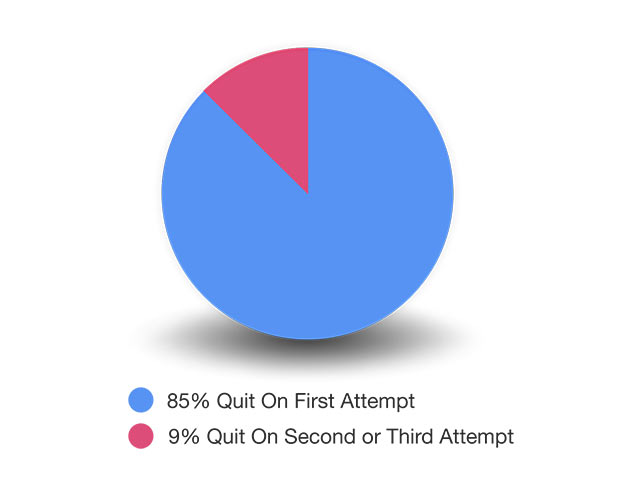
The 4 stages of the CBQ Method tackle the core reasons why you smoke so you can quit without feeling a void or the need to substitute smoking with food, alcohol, or other vices. Since this method is based on psychology, it also shows you how to stop relying on cigarettes to relax, concentrate, or cope with negative emotions.

Now that you know why the CBQ Method is the easiest way to quit smoking naturally, you might be wondering what the 4 stages of quitting smoking are, and how to apply them to your own life so you can quit for good. That’s exactly what I’d like to share with you in a free webinar.
How to Quit Smoking Naturally, in 4 Easy Steps
To show you how the CBQ Method can work for you, I’m running an online quit smoking seminar, called:
“The 3 Real Reasons You’re Struggling to Quit Smoking and How to Overcome Them with the CBQ Method.”
Signing up is free, and there are no strings attached. You won’t be obligated to purchase anything, and you can stay on the webinar for as long as you’re benefiting. It’s up to you.
My hope is that this webinar will open your eyes to what’s been causing you to struggle… and that you’ll walk away with a new perspective so you can find what works best for you.
During this webinar, you’ll discover:
- The 3 barriers that make quitting hard for you and HOW to overcome them with the CBQ Method, so you can quit easily
- The 4 quit smoking stages and how to follow them so you can stop desiring cigarettes without using medication, substitutes, or “band-aids”
- What triggers your most intense cravings and how to stop cravings instantly with a simple, 2-minute exercise.
- And you’ll leave with a day-by-day plan for your quit smoking journey that follows the 4 stages of the CBQ Method – and that you can put into action right after the webinar. (This step-by-step plan of the CBQ Method is something I haven’t shared anywhere else.)
Click here to register for this upcoming free seminar
After the webinar, you’ll have everything you need to quit permanently…
- Without willpower
- Without feeling deprived
- Without having anxiety
- And without gaining weight
You can register here. I’m happy to share what I know during the webinar, and if you think it’s not for you, you can always leave – no hard feelings. Every year, over 86,000 smokers and (still mentally dependent) ex-smokers attend our webinars and they all leave with a lot of tips, motivation, and a plan to stop smoking easily with the CBQ Method.
Out of the tens of thousands attending our webinars, there’s always a small percentage of people who wonder, “Why offer something so good for free? What do you get from this?” – both reasonable questions. I am hosting the CBQ webinars because my mission is to reach and help as many smokers as possible with the CBQ Method.
After the webinar, some of our attendees decide to join our premium CBQ Program and apply the CBQ Method with us, while others take the information shared on the webinar and apply the CBQ Method by themselves.
Whether you choose to apply the CBQ Method by yourself or with our paid program, I am committed to making sure you benefit tons from the free webinar.
This webinar can change everything for you because you will discover this natural, highly-successful way to quit smoking easily. And as I mentioned earlier, there are no strings attached.
Right now, all you have to do is click the button below, select the viewing time that works for you, and show up ready to learn a lot.
Register For the Free Webinar
Thank you so much for being here with me and reading along.
See you soon,
Nasia Davos (MBPsS, IPPA, MA)
Creator of the CBQ Method™

P.S. You landed on this page for a reason. I’m glad you’ve read this far. But I have so much more I want to share with you. That’s why I invite you to sign up for this webinar now, while you’re thinking of it.
In this free webinar I reveal the 3 real reasons you’re struggling to quit smoking and show you how to overcome them with the CBQ Method. You will discover how the CBQ Method works, and you’ll get a step-by-step plan you can apply to your own life so you can quit smoking easily and permanently.
These are the exact 4 stages that have reached and helped millions of smokers quit for good – and I know they can work for you, too. But you won’t know unless you attend this free webinar and find out for yourself. I’d hate for you to miss out.
There’s no obligation. You won’t be pressured in any way. It’s just that there’s a lot more to explain than I can get into here. After that you can decide what to do from there.
Thousands of people like you have watched this same webinar – and it’s inspired them to take the next step. So don’t miss this chance. Click the button below to choose the day and time that works best for you.
Register For the Free Webinar


